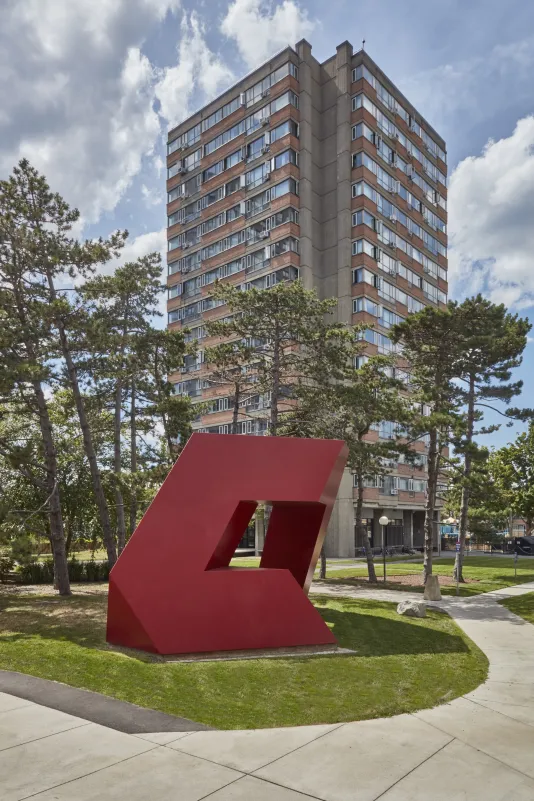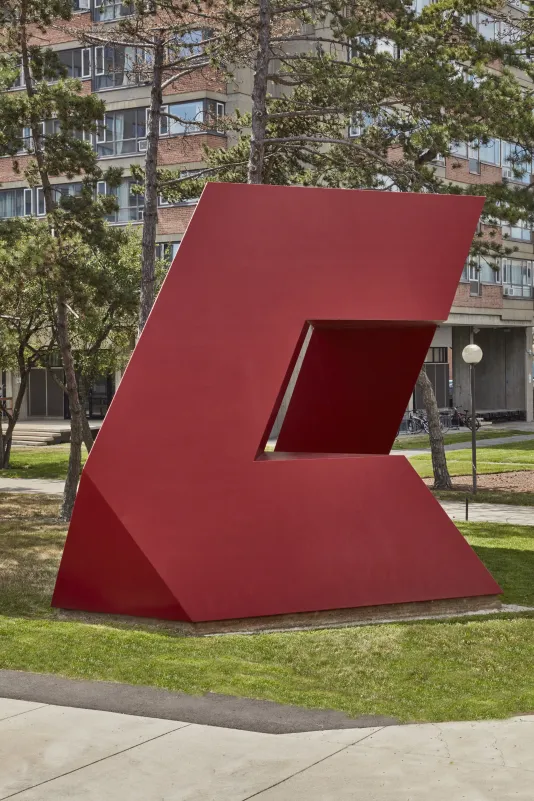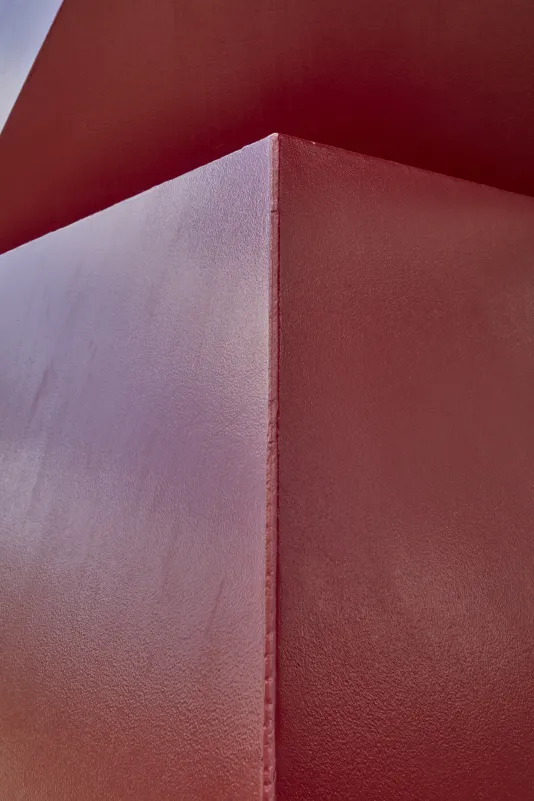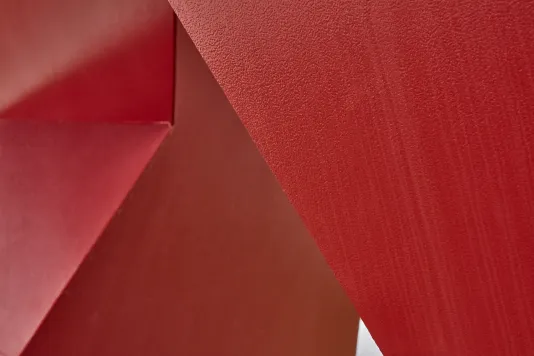Tony Smith, For Marjorie, 1961. Purchased with MIT Percent-for-Art funds. © 2025 Tony Smith Estate / Artists Rights Society (ARS), New York. Photo: Charles Mayer Photography
For Marjorie, 1961

Tony Smith’s sculptures reflect his strong interest in mathematical design and modular construction.
He gained experience in these realms through his studies at New Bauhaus, established by László Moholy-Nagy, as well as his ensuing architectural career, including his work for Frank Lloyd Wright. Once he turned to sculpture in the 1950s and ‘60s, Smith often organized his works by tetrahedral or octahedral modules, either whole or sliced.
For Marjorie is a steel construction that exemplifies Smith’s mature work, particularly the tension between rational, mathematical overall forms and elusive, irregular variations. As a whole, this sculpture suggests that a long, oblique rectangular prism has been bent into the confines of a larger triangular pyramid, with some of its corners sliced at an angle. At eye level, a cross-section of one end of the bent form takes the shape of a trapezoid while the other end seems triangular. A consideration of the sculpture’s negative space continues the geometric play, as the cavity underneath the apex could contain additional combinations of rectangular and triangular prisms. Because these basic modular units have so many axes, they seem to be in motion, gesturing in space and framing their environment. The scale of this form, at nearly twenty feet tall, is another obstacle to its comprehension. Smith himself found his forms difficult to draw, so he created small, three-dimensional cardboard models. These were usually translated into full-size mock-ups in painted plywood and then industrially fabricated in steel. For Marjorie was first made in plywood in 1961, but was not fabricated in steel until fifteen years later, for its installation at MIT in 1977. It was named for Marjorie Iseman, sister of the painter Helen Frankenthaler and a close friend of the Smith family.
Tony Smith (1912–1980) was born in South Orange, New Jersey. He briefly attended Fordham University in New York and Georgetown University in Washington, D.C. but then returned to New York where he worked in his family’s waterworks business and studied during the evenings at the Art Students League. Smith left the city for Chicago in 1937 to study architecture at László Moholy-Nagy’s recently established New Bauhaus school, and then ventured to Pennsylvania and Indiana to assist Frank Lloyd Wright with residential projects. Under Wright’s influence, Smith investigated new approaches to modular housing with smooth, angular design and opened his own architectural practice. In 1955, he returned to New Jersey and soon began to teach at Pratt Institute and Hunter College in New York as well as at Bennington College in Vermont. From the late 1950s, he focused on sculpture, influenced by his experience in building design. He became known for sleek, geometric, monumental works associated with Minimalism.
Smith was featured in solo shows at venues including the Wadsworth Atheneum, Hartford, Connecticut; Walker Art Center, Minneapolis; Newark Museum of Art, New Jersey; and Museum of Modern Art, New York. His work appeared in important exhibitions of Modern sculpture at the Los Angeles County Museum of Art; Corcoran Gallery, Washington, D.C.; and Whitney Museum of American Art, New York. His many awards, fellowships, and recognitions include a Guggenheim Fellowship, Fine Arts Medal from the American Institute of Architects, Distinguished Teaching of Art Award from the College Art Association, and Creative Arts Award for Sculpture from Brandeis University. He was inducted into the American Academy of Arts and Letters in 1979. Smith died in 1980 in New York.






